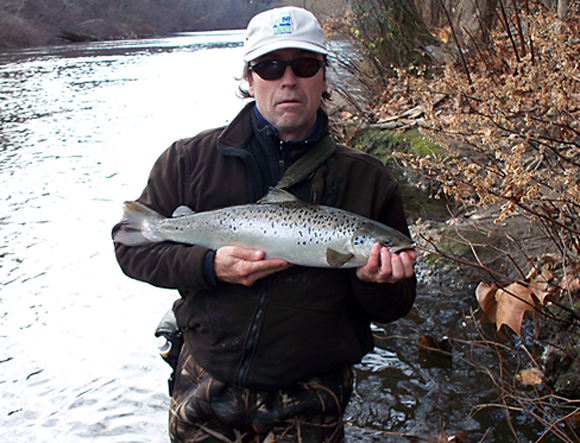Environmental issues put rivers at risk

The trout season has officially ended except for the designated TMAs. Opening day has been switched to the 2nd Saturday in April this year so mark your calendars. A few of the open areas on the Farmington have been producing some beautiful browns for those fishing nymphs in these very cold temperatures however most of the state’s streams remain icy or slushy.
The Kensington Hatchery is up on the block for the third time so write letters immediately. The comment period is nearly over. The Kensington Hatchery produces all of the eggs used in SIC and TIC and is the only hatchery in the state capable of raising Seeforellen brown trout and Atlantic salmon. The loss would be a travesty for Connecticut’s fisheries and would also set precedent for more cuts to the state fisheries rather than increasing monies allocated to DEEP.
While you are writing, you might consider writing the Connecticut Siting Council in opposition of an enormous power plant that is proposed very close to the Oxford Airport. This plant will save the average Connecticut customer within a 10 mile radius of the plant approximately $35 annually as most of the power will be sold to residents in R.I. and Mass. The cost of this plant will be six trout streams, the lower estuary of the Housatonic and Long Island Sound.
The proposed Towantic Power Plant will draw more than a million gallons of water annually from the Pomperaug River which is formed by the Nonewaug and Weekeepeemee Rivers as well as Sprain Brook. Currently, these streams run very low during summer months. The plant will be built right near the headwaters of the Little River which is right on the fringes of over development as it sits. All four of those streams contain wild and holdover trout. The grey water or outflow from the plant is proposed to release all of this very warm and not very clean water into the Naugatuck River upstream of where a 6.5 million dollar fish bypass was recently completed. The Naugatuck flows into the lower estuary of the Housatonic a relatively short distance downstream. The estuary contains the largest wintering over populations of striped bass in the northeast. This would be a huge step backward for Connecticut as the Naugatuck and Housatonic have come such a long way ecologically.
Remember, there has been nothing invented by humans since the dawn of time that does not break or fail. what will happen when this plant breaks or fails. Would the damage take decades to repair itself or will the damage be permanent?? Either way, this is not good for Connecticut.
– Ron Merly